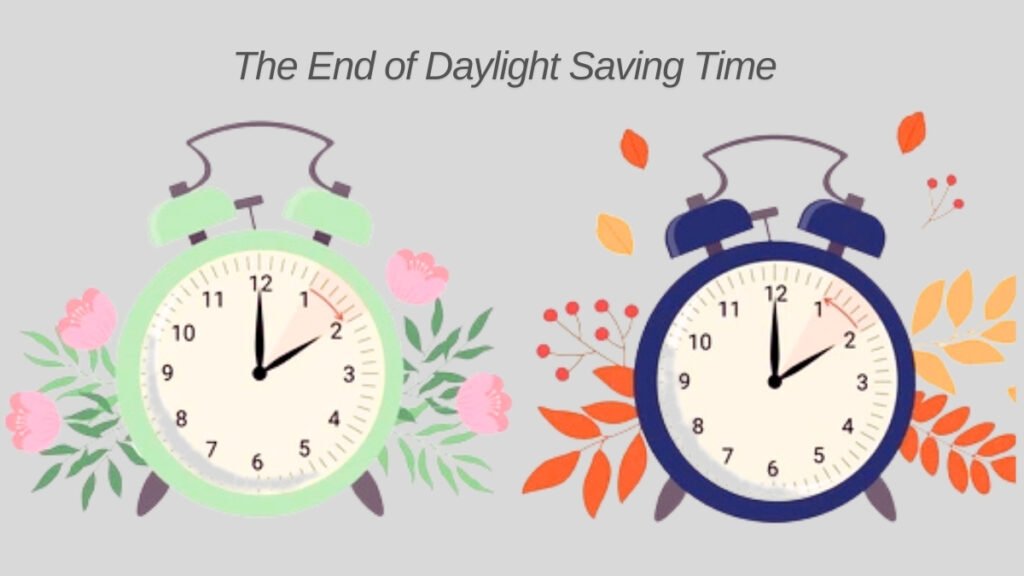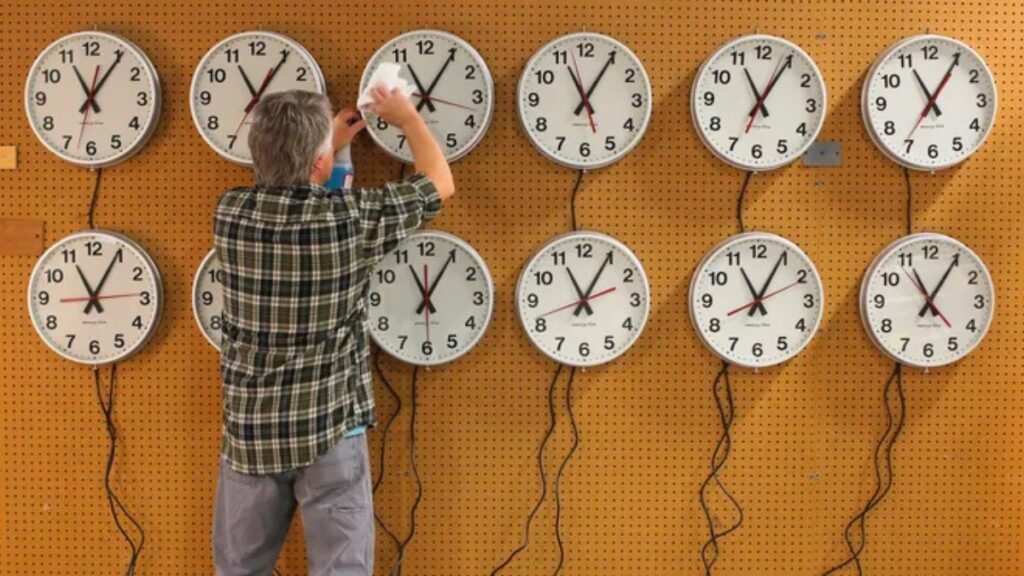The End of Daylight Saving Time: As fall progresses, people across the United States prepare for the end of daylight saving time (DST), a practice that shifts our clocks to make better use of daylight. Each autumn, we “fall back” an hour, making evenings darker but adding light to the mornings. Here’s a look at why we change our clocks, the history of DST, and the ongoing debates surrounding its relevance.

The End of Daylight Saving Time
The End of Daylight Saving Time: DST was introduced in the U.S. in 1918 during World War I as a way to conserve energy by aligning daylight hours with the busiest parts of the day. It was reintroduced during World War II, with a more structured system put in place by the Uniform Time Act of 1966, which set nationwide DST start and end dates. Adjustments have occurred over the years, including an extension in 2005 to maximize daylight and optimize energy savings.
When Does Daylight Saving Time End?
Daylight saving time in 2024 ends on Sunday, November 3, at 2 a.m. At that time, clocks will be set back by one hour. This tradition helps shift daylight to earlier in the day during the darker fall and winter months, benefiting early risers and morning commuters. DST will return on Sunday, March 9, 2025, as clocks “spring forward,” adding more daylight to evening hours.

Which States Do Not Observe DST?
The End of Daylight Saving Time: Most U.S. states observe DST, but a few do not. Hawaii and most of Arizona (excluding the Navajo Nation) have opted out, as have territories like Puerto Rico, Guam, and American Samoa. The Uniform Time Act allows states to choose standard time year-round, though adopting permanent DST would require federal approval.
Read Aur More Article: Tensions in London: Tommy Robinson Arrest Sparks Protests
The Debate Over Daylight Saving Time
The relevance of DST is a hot topic. Some states, such as Florida and Alabama, support permanent DST, arguing it improves public safety, reduces energy use, and aligns better with modern lifestyles. The Sunshine Protection Act, passed by the U.S. Senate in 2022, would make DST permanent; however, it is awaiting approval from the House of Representatives.

Why Change the Clocks at 2 a.m.?
DST adjustments happen at 2 a.m. to limit disruption. At this hour, fewer people are active, and few trains or buses are running, minimizing the impact on daily schedules and essential services.
Benefits and Drawbacks of DST
The End of Daylight Saving Time: Proponents of DST suggest that it encourages outdoor activities in the evening and could reduce crime rates. It might also offer slight energy savings by reducing the need for artificial lighting. However, critics argue that DST disrupts sleep cycles and has been linked to increased health risks, including cardiovascular issues, particularly during the springtime shift.

The Future of Daylight Saving Time
The future of DST in the U.S. remains uncertain. While the Sunshine Protection Act is one step closer to making DST permanent, final legislative approval is still pending. Until a permanent solution is reached, Americans will continue adjusting their clocks twice a year, a practice rooted in tradition yet under scrutiny for its effects on health, safety, and energy use.
Conclusion
The End of Daylight Saving Time: As we prepare to “fall back” this November, DST reflects both tradition and modern-day challenges. Whether it stays or is phased out, this time shift remains a seasonal reminder of the balance between daylight and daily life.
READ MORE :-













